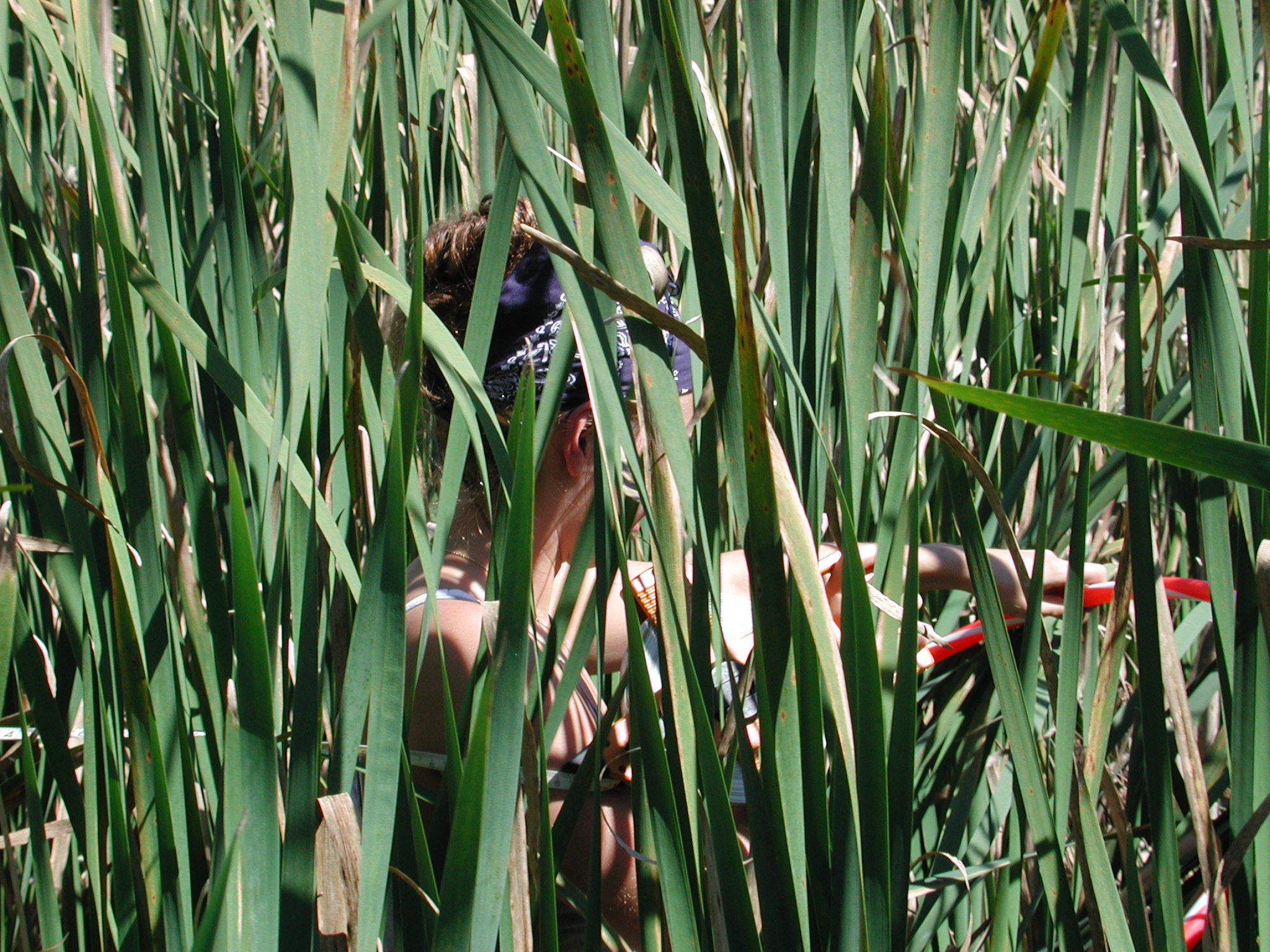|
definition functions losses alterations Restoration Decisions: (and theory) designtype site reference sites HGM vs. IBI hydrology vegetation soil landscape success criteria floristic quality Abby Rokosch Jessen Book Siobhan Fennessy |
Vegetation Composition in Wetland Restoration For revegetation techniques CLICK HERE! Vegetation has been frequently used as an indicator of wetland restoration success. The types of plant species growing in a wetland are often a gauge of the wetland's biological status. A wetlands ability to support its natural vegetation can be a positive indicator of its capability to sustain natural functions and biological processes that once existed before degradation. It is important to note that the establishment of certain vegetation criteria is only one step towards understanding a wetlands functions. Vegetation is often used to measure restoration progress because it is generally easy to identify and sample. Wetland plant communities have been one of the major criteria of measuring the "success" of wetland restoration projects for many reasons. The vegetation of a wetland is effected by the overall physical, chemical, and biological condition of the wetland ecosystem. Plant communities are usually one of the first components in a wetland to respond to an alteration or disturbance in land use or hydrology. Because plant species have different life history strategies and ecological tolerances, plant communities can be used to assess the health of the wetland ecosystem (Fennessy et al., draft). Because vegetation is such an important aspect of the wetland ecosystem, and is also easily quantified, a move has been made to use it as a meta-variable to summarize and compare divergent wetlands. (For more information see State of the Science and Floristic Quality.)
Photograph by Jessen Book Vegetation is not the only criteria of assessing the restored wetlands health or function It is important to understand that though wetland vegetation is an important component of all wetland ecosystems, it is not a measure of the absolute success or ability of the wetland to sustain its natural functions. The presence of plants in a wetland does not mean the restored wetland is a success or even a biologically functioning system. A much deeper analysis of the wetlands biological processes and functions are needed in order to accurately determine if the wetland is a self-sustainable ecosystem. While vegetation can be seen as an indicator of the wetlands health or biological condition, other aspects of the wetland ecosystem, including hydrology and soil composition, must be placed on an equal if not greater scale of importance. Reestablishing vegetation in restoration projects If you are a wetland restorationist who believes in the "design" theory of wetland restoration, you will want to take a closer look at the different ways to reestablish vegetation. This is a wetland restoration approach that favors direct intervention through means of landscape engineering as well as actively replanting wetland vegetation. However, some restorationists believe in the "self-design" theory of wetland restoration. They believe that overtime, under adequate environmental conditions, a wetland will re-vegetate through natural processes. In this case no planting efforts will be made. The restoration site will be allowed to naturally revegetate and colonize wetland plants. Revegetation techniques described by Middleton (1999)
Natural Revegetation Objective: To allow the vegetation to colonize the wetland without intervention. Condition: Usually the seed bank has to be in relatively good condition and have adequate means of dispersal. If these conditions are met along with the restoration of wetland hydrology then plant species may be able to regenerate. Natural revegetation is site specific and depends on other factors such as the degree of degradation, the position of the wetland in the landscape, and the surrounding land use. Questions to ask before using this technique (taken directly from Middleton,1999):
Direct Seeding Objectives: To collect seeds from nearby areas in order to plant them in intended wetland restoration projects. This should increase the probability of establishing a native wetland flora. Conditions: A survey of local flora type should be conducted before choosing the wetland species to plant. Seeds should be collected before they mature but before they shatter. Collected seeds can either be propagated to produce plants or spread onto the sites. Depending on the region and location of the wetland, seed stratification may be required. The method and time in which seeds are planted depends on the wetland species. For more detailed information regarded this technique see (Middleton, 1999; Galatowitsch and van der Valk, 1994; Harmer and Kerr, 1995) Donor Seed Banks Objectives: To transfer soil from an existing wetland to a restoration site. Conditions: This technique is particularly useful if a wetland is being destroyed near one that is being restored. For more detailed information regarding this technique see (Middleton, 1999; Galatowitsch and van der Valk, 1994; and Brown and Bedford, 1997) Direct Planting Objective: To plant propagated nursery plants or vegetative fragments. Conditions: Plants to be transplanted can be contained at the restoration site if an on-site nursery is established. The specifics about transplanting plants are dependent on the wetland's situation within the landscape and other hydrogeomorphic variables. For more specific information on direct planting see (Middleton, 1999). CASE STUDIES CASE STUDY 1: A long term assessment of wetland restoration efforts comparing created
and natural wetlands. (Confer and Niering, 1992; Moore, et al., 1999). CASE STUDY 3: Limited response of cordgrass (Spartina foliosa) to soil amendments in a constructed marsh. (Gibson et al., 1994). |
